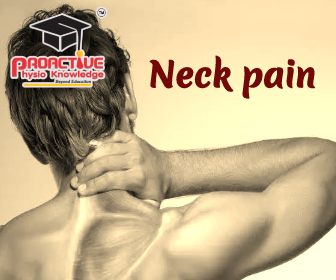Neck Pain
With the ultimate goal of matching individuals with specific interventions from which they will most likely benefit[1], classification provides a general framework for the identification of subgroups of patients based on the primary treatment goal. Clinical decision-making can be aided by diagnostic algorithms and classification, which make it easier for doctors to determine the best course of treatment for a patient and to forecast their prognosis.
There is insufficient evidence to support any one method of treatment for neck pain in primary care, and it is not clear what the most cost-effective, time-efficient, and effective method of treatment is. Pathoanatomical diagnosis has been replaced by prognostic tests that can separate a diverse population into treatment-focused subgroups, providing better information for patients’ care while also being more cost effective[2, 3]. Individuals can be assigned to treatment subgroups according to their primary treatment goal, and this classification can help identify which interventions will be most helpful in helping them achieve that goal[2][4].
Classification Types
Neurological or non-specific
The diagnosis of “neurological involvement” or “non-specific” neck pain (also referred to as “mechanical” pain) is often made after a patient has undergone diagnostic triage and been cleared of any serious spinal pathology. More people have mixed pain, which is likely because degenerative conditions predispose people to both radicular and nociceptive (non-specific) pain, making it difficult to classify.
Ailment described in medical terms
In this medical model, the individual’s condition, such as cervical osteoarthritis, cervicogenic headache, etc. is taken into account[5].
Pathoanatomical
It’s a medical model that looks at dysfunctional structures like the facet joint, intervertebral disc, and myofascial tissue from a structural perspective[5]. Pathoanatomical sources cannot be pinpointed in the majority of neck pain sufferers, and existing classification systems tasked with identifying pathoanatomic mechanisms have been largely ineffective[1]. There is a problem with the pathoanatomical model when it comes to making clinical decisions about treatment because different diagnoses often share symptoms[8].
Response to movement (centralisation)
This content is private. please select our membership plan to unlock the private content features.
Click here
And unlock the content.




